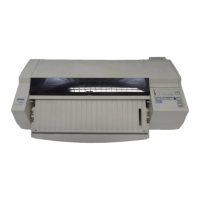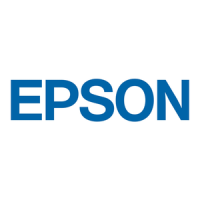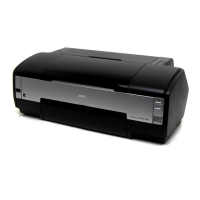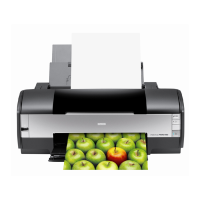Table 1-5. Connector Pin Assignments and Signals (Reverse Channel)
Pin No. Signal Name
Return
GND Pin
I/O Description
1 Host Clk 19 I
Host clock signal.
2 - 9 DATA 0 - 7 20 - 27 I
Signals DATA0 - DATA7 represent data
bits 0 to 7, respectively. Each signal is
HIGH when data is logical 1 and LOW
when data is logical 0. These signals are
used to transfer the extensibility request
values (described in IEEE-P1284) to the
printer.
10 PtrClk 28 O
Printer clock signal.
11
Ptr Busy /
Data Bits 3, 7
29 O
Printer busy signal and reverse channel
transfer data bit 3 or 7.
12
Ack Data Req /
Data Bits 2, 6
28 O
Acknowledge data request signal and
reverse channel transfer data bit 2 or 6.
13 Xflag / Data Bits 1, 5 28 O
X-flag signal and reverse channel transfer
data bit 1 or 5.
14 Host Busy 30 I
Host busy signal.
31 INIT 30 I
Not used.
32
Data Avail /
Data Bits 0, 4
29 O
Data available and reverse channel transfer
data bit 0 or 4.
36 1284-Active 30 I
Active signal for IEEE-P1284 mode.
18 Logic-H — O
Pulled up to +5 V via a 3.9 KΩ resistor.
35 +5 V — O
Pulled up to +5 V via a 3.3 KΩ resistor.
17 Chassis GND — —
Chassis ground.
16, 33
19 - 30
GND — — Signal ground.
15, 34 NC — —
Not connected.
Note: The I / O column indicates the direction of the signal as viewed from the printer.
Optional Interface
The Stylus 1500 supports an optional Type-B interface with the following characteristics:
Reply Message: ESC/P2 is selected:
Main type: MTP48p, PW136cl10cpi, PRG(L0xxxx)rev,AP800ma
Product name: Stylus 1500
Emulation type: ESCPL2-00
Entity type: EPSON LQ2
XL24E is selected:
Main type: MTP48p, PW136cl10cpi, PRG(L0xxxx)rev,AP800ma
Product name: Stylus 1500
Emulation type: PRPXL24-00
Entity type: EPSONPRPXL24
Printer Features
EPSON Stylus 1500 Service Manual 1-13

